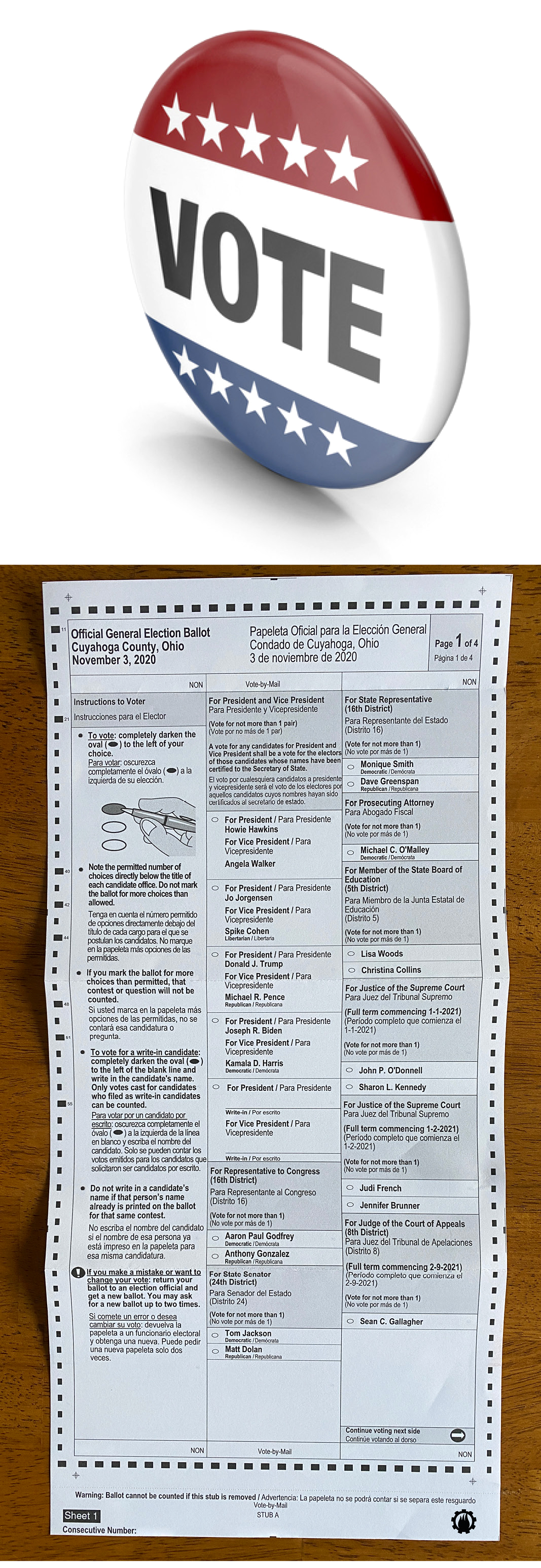VOTE TODAY

Please remember to vote today.
Here’s a little trivia to share with friends. Thanks to constitutioncenter.org for the trivia.
1. Elections took place way before the Constitution was ratified – The English in particular conducted voting soon after they landed in Virginia in the 17th Century. But not everyone could vote and not every office was up for election. But many colonies allowed male adults who owned land to vote for legislators who served in lower assemblies.
2. George Washington and Election Day consumption – In 1758, a young candidate in Virginia for the House of Burgesses footed a huge liquor bill to woo voters on Election Day. George Washington spent his entire campaign budget, 50 pounds, on 160 gallons of liquor served to 391 voters. Buying votes with booze was already a custom in England. Washington also was following a Virginia tradition where barrels of liquor were rolled to courthouse lawns and polling places on Election Day.
3. We wouldn’t recognize an Election Day about 200 years ago – Not only were eating, drinking and parading common, votes could be conducted by a public voice vote. Political parties would also hand out pre-printed ballots for voters to cast, to ensure that people voted for a party ticket. It wasn’t until the 1890s that the Australian ballot, also known as the Secret Ballot, became commonly used in America.
4. The Constitution didn’t spell out when Election Day was – The administration of elections was left up to the individual states in the Constitution, with the exception of some basic requirements for presidential and congressional candidates. States were left to pick their own election days, including when elections for federal offices were held. But any federal election involving the Electoral College needed to be resolved by mid-December.
5. The weather and farming dictated when elections were held – In the 1800s, the agrarian economy was an important factor, and farmers weren’t able to travel easily until the harvest was over. Also, the onset of winter conditions in areas that had winter conditions made travel a problem, so elections typically happened in the late fall.
6. Election Day wasn’t on a fixed day until the mid-19th century – Congress finally stepped in to set a uniform day for presidential elections in 1845 as the first Tuesday after the first Monday in November. This was a scheme borrowed from New York state and it allowed people to observe the Sabbath, travel to vote, and return home for Wednesday, which was observed as Market Day. This was just for presidential elections every four years, but it started a trend.
7. Election voting machines are a 20th Century innovation – The mechanical lever voting machine was patented in 1889 but it took decades for the machines to become commonplace. Jacob H. Myers built the first lever machine used in an election, back in 1892. Meyers said the devices were needed to prevent “rascaldom.”
8. The mechanical voting machine is extinct – The classic mechanical lever voting machine (the one with the moveable curtain our parents used) was phased out by 2010 in the United States. Most votes are now conducted using electronic digital voting machines or by using paper ballots that are sometimes optically scanned.
9. The chance of a “hanging chad” is almost extinct, too – By 2012, punch card voting machines only accounted for 0.02% of machines in use. Back in 2000, it was a problem with the chads (the rectangular pieces of a card punched to indicate a vote), that caused problems with the presidential vote in Florida.
10. Not all states vote on the first Tuesday after the first Monday in November – In years when federal elections aren’t held, not all states feel the need to have an election on a traditional Election Day. In 2015, Oklahoma, Rhode Island and Louisiana held elections later in the month.
BONUS TRIVIA – A one-of-a-kind election that was literally “no contest” when George Washington ran unopposed in our country’s first election. Organized political parties had yet to form, so Washington’s victory is the only one in our nation’s history to feature 100 percent of the Electoral College vote. (The real question in 1788 was who would become vice president. At the time, this office was awarded to the runner-up in the electoral vote (each elector cast two votes to ensure there would be a runner-up.) Eleven candidates made a play for the vice-presidency, but John Adams came out on top.


